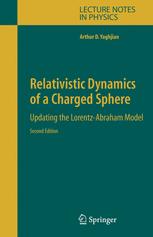

Most ebook files are in PDF format, so you can easily read them using various software such as Foxit Reader or directly on the Google Chrome browser.
Some ebook files are released by publishers in other formats such as .awz, .mobi, .epub, .fb2, etc. You may need to install specific software to read these formats on mobile/PC, such as Calibre.
Please read the tutorial at this link: https://ebookbell.com/faq
We offer FREE conversion to the popular formats you request; however, this may take some time. Therefore, right after payment, please email us, and we will try to provide the service as quickly as possible.
For some exceptional file formats or broken links (if any), please refrain from opening any disputes. Instead, email us first, and we will try to assist within a maximum of 6 hours.
EbookBell Team

4.0
26 reviews"This is a remarkable book. […] A fresh and novel approach to old problems and to their solution." –Fritz Rohrlich, Professor Emeritus of Physics, Syracuse University
This book takes a fresh, systematic approach to determining the equation of motion for the classical model of the electron introduced by Lorentz more than 100 years ago. The original derivations of Lorentz, Abraham, Poincaré and Schott are modified and generalized for the charged insulator model of the electron to obtain an equation of motion consistent with causal solutions to the Maxwell-Lorentz equations and the equations of special relativity. The solutions to the resulting equation of motion are free of pre-acceleration and runaway behavior. Binding forces and a total stress–momentum–energy tensor are derived for the charged insulator model. Appendices provide simplified derivations of the self-force and power at arbitrary velocity.
In this Second Edition, the method used for eliminating the noncausal pre-acceleration from the equation of motion has been generalized to eliminate pre-deceleration as well. The generalized method is applied to obtain the causal solution to the equation of motion of a charge accelerating in a uniform electric field for a finite time interval. Alternative derivations of the Landau-Lifshitz approximation are given as well as necessary and sufficient conditions for the Landau-Lifshitz approximation to be an accurate solution to the exact Lorentz-Abraham-Dirac equation of motion.
The book is a valuable resource for students and researchers in physics, engineering, and the history of science.